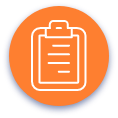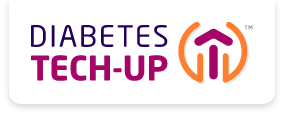Identifying patients who may be appropriate for a tech-up
7 min read

When you’re determining whether a person with diabetes might be a good candidate for a digital health tool, consider:

What diabetes management challenges do they face?

Which tool could best meet
their needs?

What are their barriers to adopting digital health?
These questions can help you evaluate digital health options and consider which ones could be a good fit for your patient.
What tech-up would you recommend?
Explore these hypothetical examples of patients who may be candidates for diabetes technologies.
First, review the patient profile and consider how you would address the patient’s challenges. Then, explore our suggested approaches for tech-up and communication strategies.

Jackie
Type 1 Diabetes
Age: 22
Time since diagnosis: 8 years
Day-to-day experience:
- Works in sales; concerned about having hyperglycemic episodes while on the job
- Takes basal and bolus insulin with insulin pens
Health history:
Wore an insulin pump as a teenager at parents’ insistence, but was self-conscious about its visibility and felt it was cumbersome
Discontinued pump as an adult and has not considered a wearable device since
Currently uses a BGM and finger sticks
Diabetes management challenges:
- Diabetes distress
- Self-consciousness
- Infrequent glucose monitoring and missing insulin doses at work or in social settings
Patient priorities:
- Personal appearance
- Consistent glucose monitoring without frequent testing
Attitude toward digital health technology:
- Sees glucose monitoring devices as a nuisance, but is comfortable using personal tech such as smartphones

Digital tools to explore:
- CGM with discreet profile. Although Jackie doesn’t like the idea of wearable devices, she may not be familiar with the smaller and less visible wearable glucose monitoring technology that has emerged in recent years. Consider recommending that she wear a CGM on the back of her arm or her lower back that integrates wirelessly with her smartphone.
Note: digital tools won’t change Jackie’s day-to-day experience, but may help with her self-management routine.

Potential communication strategies:
- Ask Jackie what’s frustrating her most about managing her diabetes
- Ask her what she knows about how current smartphones and CGMs can interact
- Encourage her to consider goals for the future: What would she like her situation to be 3 years from now?
- What steps would she need to take to get there?

Phil
Type 2 Diabetes
Age: 55
Time since diagnosis: 10 years
Day-to-day experience:
- Recently changed careers; new job requires frequent travel
- Has started missing insulin doses and has had several hyperglycemic episodes due to his erratic schedule
Health history:
Uses a BGM; multiple daily injections
Has had same insulin regimen for several years; doesn’t consistently keep a dose log
Managed consistent glycemic control until his recent job and schedule change
Diabetes management challenges:
- Inconsistent daily schedule
- Frequent travel
Patient priorities:
- Not adding bulk to his travel bag
- Scheduling flexibility
Attitude toward digital health technology:
- Moderately interested; reluctant to add more steps to his routine

Digital tools to explore:
- CGM and connected pen device paired with a diabetes management app. Automated glucose monitoring, dose reminders, and digital dose logging might help Phil keep up with his injections, without requiring him to carry a notebook.
Note: digital tools won’t change Phil’s day-to-day experience, but may help with his self-management routine.

Potential communication strategies:
- Since Phil doesn’t have a typical daily schedule, ask him if there are any parts of his day when he does have a consistent routine.
- Help him develop a dosing regimen that’s flexible.
- Find out if Phil uses a smartphone. Ask how comfortable he would feel about using a new app to automate dose logging and set daily reminders.
- Help him schedule time to learn and offer guidance on using the new tech.

Angelique
Type 2 Diabetes
Age: 44
Time since diagnosis: 2 years
Day-to-day experience:
- Working mother with 3 teenagers
- Challenges with physical activity and meal planning
- Busy work/home life and inconsistent sleep routine
Health history:
Recently added basal and bolus insulin to a GLP-1 receptor agonist
Occasionally misses health care appointments; often late filling prescriptions
Keeps incomplete dose logs
Diabetes management challenges:
- Busy schedule
- Stress, fatigue
- Lack of engagement with health care team
Patient priorities:
- Making diabetes management routine work with her schedule
Attitude toward digital health technology:
- Neutral (hasn’t considered)

Digital tools to explore:
- Telehealth communication, a CGM, an insulin pump, and a health tracking app. Efficiency seems key for Angelique, and there are several tools that might help. Telehealth visits and refill reminders might facilitate keeping her engaged with her health care team. The pairing of a CGM with an insulin pump could let her take insulin without interrupting her busy schedule. A health tracking app might also complement the diabetes tech.
Note: digital tools won’t change Angelique’s day-to-day experience, but may help with her self-management routine.

Potential communication strategies:
- Asking Angelique to adopt multiple technologies at once could seem overwhelming to her. Try talking through the features of each tool and ask which one she feels she could integrate into her schedule most easily.
- Follow up with virtual visits and ask her to evaluate how she has been able to work the new tool into her daily routine. If she feels confident with the first tool, suggest adding the next one.
The Diabetes Tech-upTM Podcast
Join our expert cohosts for a series of discussions about how they’re integrating diabetes tech with patient-centered care to help optimize diabetes management.
The Mission of Diabetes Tech-upTM
Diabetes Tech-upTM is sponsored by Novo Nordisk, a global leader in diabetes. We believe that adoption of innovative technologies can help appropriate patients better manage diabetes. Our goal is to provide information to help health care professionals on the front line of diabetes care strengthen their understanding of diabetes technologies and implement them where they can have the greatest impact.




Share: